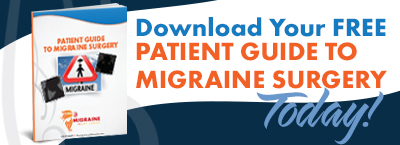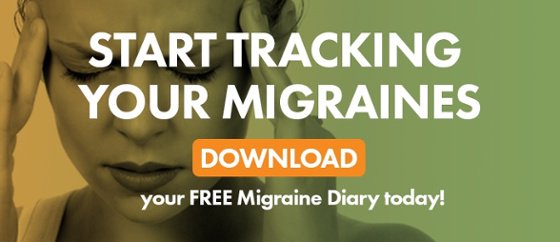According to Johns Hopkins, migraines may affect more than 12% of the adult population in the US. Migraines can strike suddenly, leaving you searching for relief as quickly as possible. Building a personalized emergency migraine relief kit can make a big difference, providing you with the essentials to manage pain and reduce triggers wherever you are. Here’s how to create an effective migraine relief kit, including key items that can soothe symptoms and offer comfort until the pain subsides.

1. Pain Relievers & Medications
Start by including any medications recommended by your doctor, such as over-the-counter pain relievers or prescribed migraine medications. Here are some essentials to consider:
- NSAIDs (e.g., Ibuprofen, Naproxen): These can reduce inflammation and alleviate pain when taken early in a migraine.
- Triptans: If prescribed by your doctor, these medications can target migraines directly and provide faster relief for some people.
- Anti-nausea medication: Nausea often accompanies migraines, so having anti-nausea medication can help alleviate this symptom.
Tip: Store medications in small, travel-sized containers to save space in your kit.
2. Cooling & Heating Pads
Temperature therapy is a common technique for managing migraine pain. Many people find relief through cooling or heating packs, which help relax tense muscles or dull throbbing sensations.
- Reusable cold packs or gel masks: Cooling packs, especially ones that can be wrapped around the head or eyes, can numb the pain and reduce inflammation.
- Small heating pad or heat patch: For some, heat helps relieve muscle tension that can contribute to migraines, especially in the neck and shoulders.
Tip: Choose lightweight, flexible cold packs that can be molded to fit around your head.
3. Eye Mask and Earplugs
Bright lights and loud noises can worsen migraines, so having ways to block out sensory stimuli can be very helpful.
- Light-blocking eye mask: A soft, comfortable eye mask helps reduce light exposure, especially in environments where you can’t control lighting.
- Noise-canceling earplugs or earphones: Earplugs block out noise, while noise-canceling earphones can play calming music or white noise.
Tip: Look for eye masks with a cooling option, which combines light-blocking with cold therapy for double the relief.

4. Essential Oils for Aromatherapy
Some essential oils may help reduce migraine symptoms, thanks to their calming effects and ability to relieve tension.
- Peppermint oil: Known for its cooling and anti-inflammatory properties, peppermint oil applied to the temples or back of the neck can bring relief.
- Lavender oil: Its calming properties make it useful for relaxation and stress relief. Inhaling lavender oil can reduce headache intensity for some people.
Tip: Store essential oils in roller bottles for easy application on the go.
5. Water Bottle
Dehydration is a common migraine trigger, so keeping a water bottle in your kit can help you stay hydrated and potentially fend off a headache.
- Insulated water bottle: This type of bottle can keep water cold for hours, providing added comfort when you’re feeling overheated.
- Electrolyte packets: These are great to have on hand if you need a hydration boost. Electrolytes help the body retain fluids, which can be helpful during or after a migraine.
Tip: Look for compact, reusable water bottles to save space in your kit.
6. Snack for Blood Sugar Balance
Sudden drops in blood sugar can trigger migraines, so keeping a quick, easy snack can prevent this from happening.
- Protein bars or nuts: These snacks provide a steady release of energy without a spike in blood sugar.
- Low-sugar, high-protein options: For long-lasting energy and minimal sugar, which can otherwise spike and then drop blood sugar.
Tip: Opt for snacks with minimal artificial ingredients to avoid any additional migraine triggers.
7. Sunglasses
Migraines often make you sensitive to light, and even mildly bright settings can worsen symptoms. A pair of high-quality sunglasses can offer protection and comfort.
- Polarized lenses: These block glare, which is particularly helpful when outdoors or in places with harsh lighting.
- Blue light-filtering options: Some sunglasses are designed to reduce blue light exposure, which can also be helpful in indoor spaces with fluorescent lighting.
Tip: Choose a compact, durable pair that can easily fit into your kit.
8. Ginger Candies or Tea Bags
Ginger has anti-inflammatory properties and can help reduce nausea, which often accompanies migraines.
- Ginger chews or candies: These are easy to store and convenient to consume, offering a quick way to alleviate nausea.
- Ginger or chamomile tea bags: If you have access to hot water, these teas can help calm an upset stomach and soothe migraine pain.
Tip: Store candies in a small airtight container to keep them fresh.
9. Portable Diffuser or Personal Fan
Temperature and air quality can play a role in triggering migraines. Portable tools like mini fans or diffusers can help create a more comfortable environment.
- Battery-operated fan: Useful for cooling down and adding air circulation, especially if you’re in a warm or stuffy area.
- Mini essential oil diffuser: If you have a quiet space, a small diffuser can fill the air with calming scents, like lavender or peppermint.
Tip: Choose rechargeable, portable devices to keep things simple and travel-friendly.
10. Notebook & Pen
Tracking your symptoms can be helpful for long-term migraine management. Keeping a small notebook in your kit allows you to quickly jot down when a migraine starts, what symptoms you’re experiencing, and any possible triggers.
- Symptom tracking: Log onset time, triggers, severity, and relief methods. This helps you spot patterns over time.
- Journaling: Sometimes, jotting down your thoughts or practicing gratitude can reduce stress levels, which can reduce migraine frequency.
Tip: A small, pocket-sized notebook works well for travel, or consider using a migraine-tracking app if you prefer digital logs.
Creating Your Own Customized Kit
Everyone’s migraine experience is unique, so personalize your kit with items that work best for you. A well-prepared kit is not only practical but also helps you feel more in control, ready to tackle migraines with effective, ready-to-go relief.
With these essentials, you’ll be able to manage your migraines more effectively, giving you the tools to ease symptoms wherever you are.


